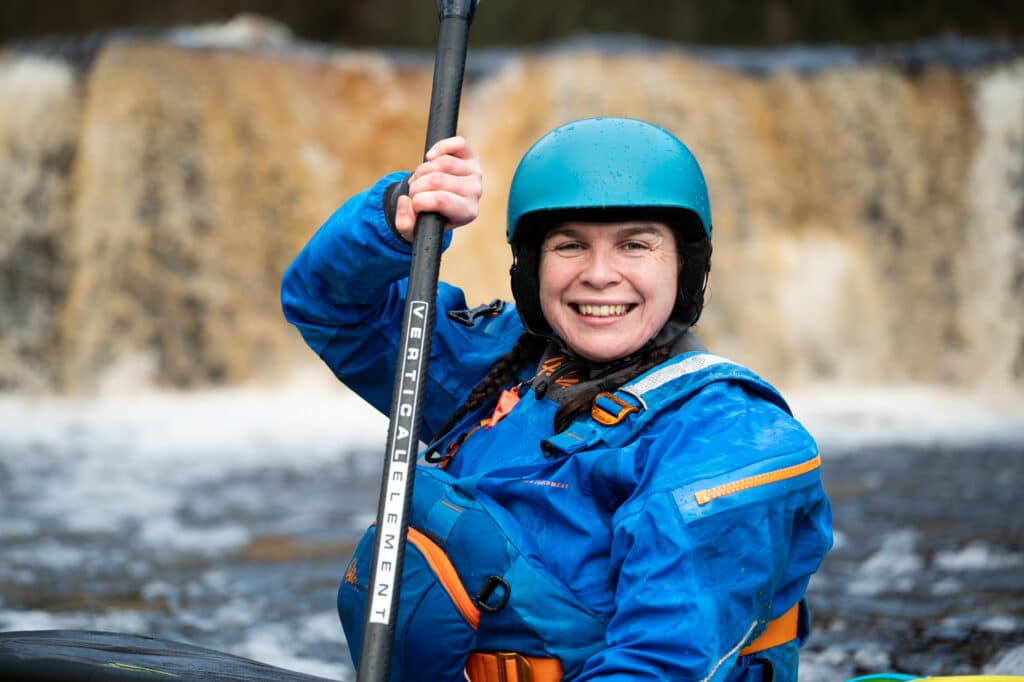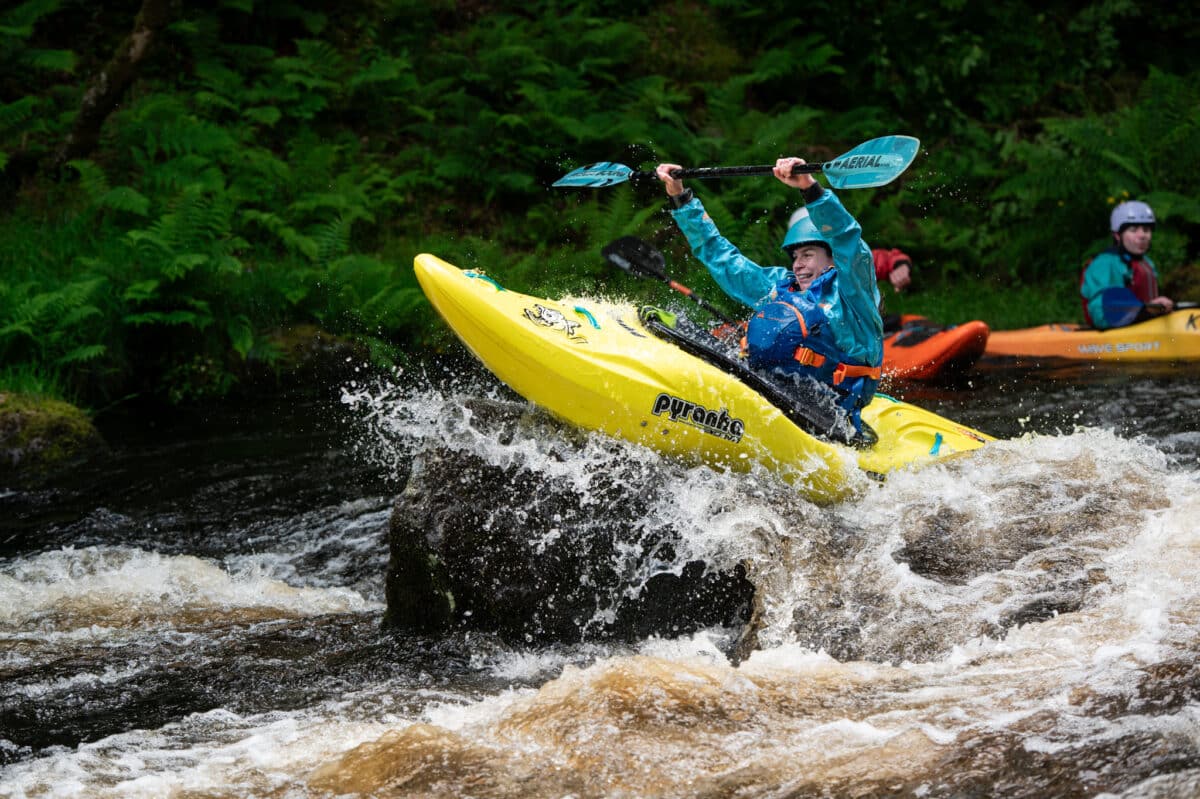‘I can’t do this.’ ‘I’m bad at kayaking.’ ‘I’m never going to learn.’ Sound familiar? If so, this article is for you!
When learning a new skill, progress starts strong, but sooner or later, improvement slows, and frustration sets in. That’s when mindset makes all the difference. Over the years, I’ve become fascinated with how a fear of failure, often linked to a fixed mindset, holds people back in kayaking. In this article, I explore how shifting to a growth mindset can help break these barriers.
What is a ‘fixed vs growth’ mindset?
I first heard about ‘fixed vs growth’ mindsets during a work CPL session in my early twenties. At the time, I tuned out – it felt abstract, boring. It wasn’t until years later, when I started reflecting on my own learning struggles, that the concept truly resonated and I took a real interest in it.
A fixed mindset is the belief that abilities are inherent and unchangeable, meaning failure is feared because it seems like proof of inadequacy. In contrast, a growth mindset sees skills as something that can be developed with effort, viewing challenges and setbacks as valuable learning opportunities. Recognising this difference changed how I approached many things in my life, especially in kayaking
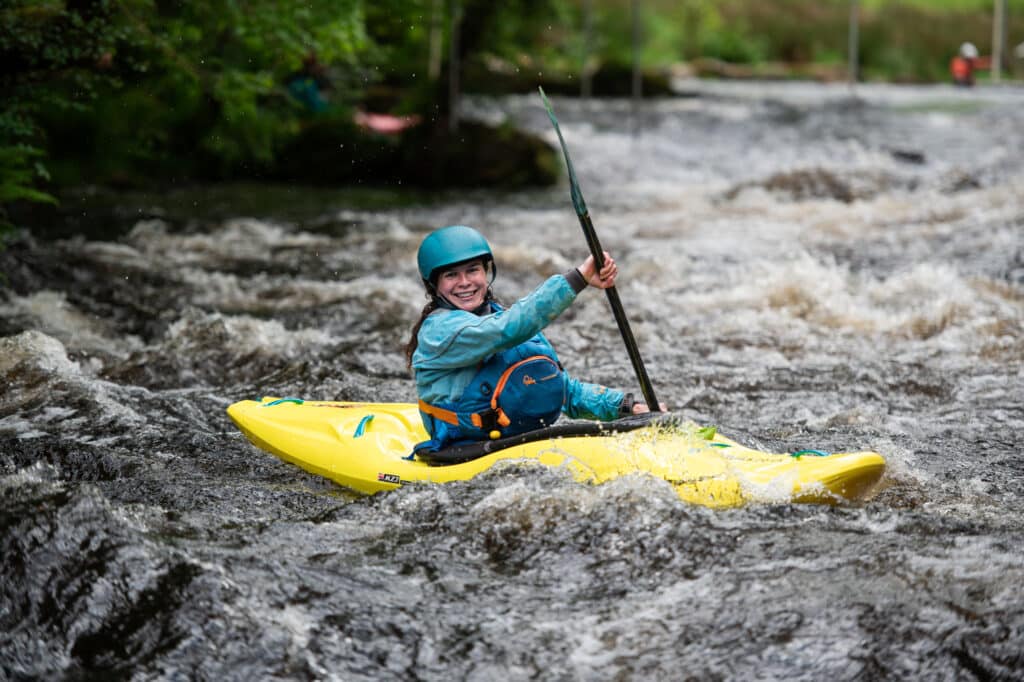
What does that look like in white water kayaking?
There are many behaviours that reflect someone might have a fixed mindset in their kayaking and I’ve chosen three common ones to explore further. These are behaviours that I have noticed both other people and myself doing. Have a read and see if any of them seem familiar to you.
1. Not trying things
Let’s be clear: avoiding a rapid beyond your skill level is smart decision making, not fear. What I’m talking about is avoiding low risk challenges – those moments where the consequence is minimal, but self doubt makes you hesitate.
Every kayaker has seen it. Imagine a group of friends playing at river features; practicing ferry glides, surfing waves, or trying out tailees. Meanwhile, there will be others who will stay in the eddy and watch, even though they’re capable. If this happens regularly without a valid reason (fatigue, injury, etc.), mindset might be the real obstacle.
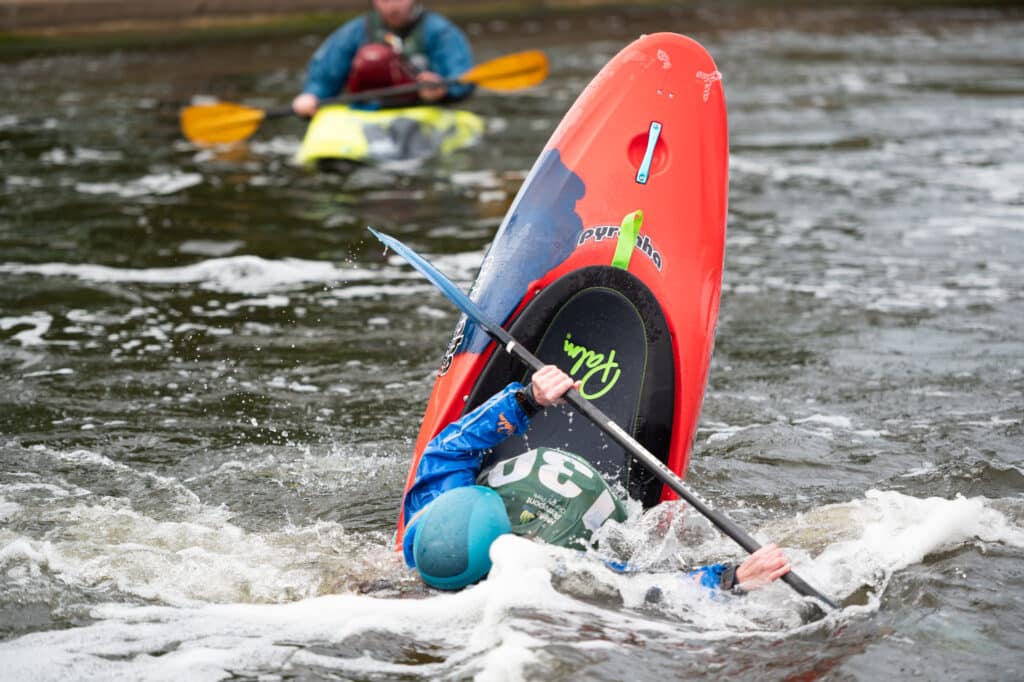
2. Lacking confidence
Self doubt can sabotage success before a move even begins. Confidence isn’t just about believing you’ll nail a skill, it’s about staying focused on execution of the move rather than your fear of it.
Most of my worst kayaking moments happened not because I lacked ability, but because I doubted myself. That hesitation, letting ‘I can’t do this’ loop in my head, ruined my timing, focus, and control.
It’s a vicious cycle. I dither because I’m scared and I’m so focused on thinking that I can’t do it that I don’t think about what I should be doing! This then leads to further self doubt and an increased reduction in confidence when I next go to try this move. Suddenly ‘I don’t think I can do this’ turns into ‘I can’t do this. Look what happened when I tried last time’. It’s a hard cycle to break.
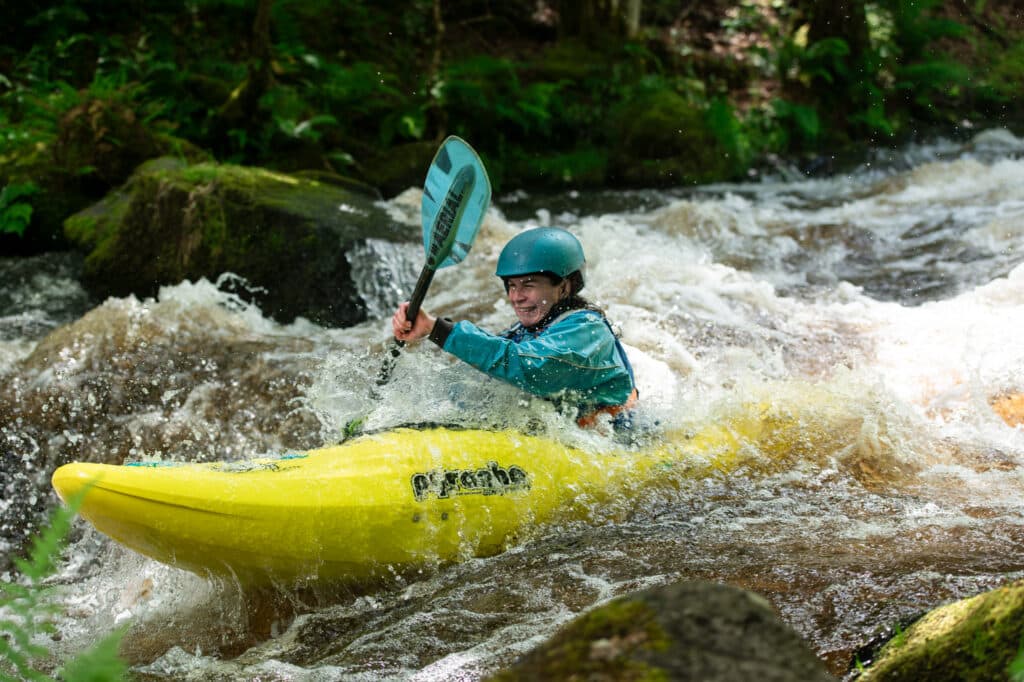
3. Responding badly after making mistakes
Early in my kayaking journey, I swam a lot. My boyfriend reassured me: ‘No one minds when you swim – you always come up grinning!’ And honestly, I didn’t understand why people saw mistakes as embarrassing. If I was fine and my gear was recovered, why wouldn’t I be happy?
As I progressed, though, that changed. I started feeling self conscious, worrying about what others thought of my mistakes. That fear of failure, of looking ‘bad’, made me paddle more cautiously, avoiding risks instead of embracing challenges.
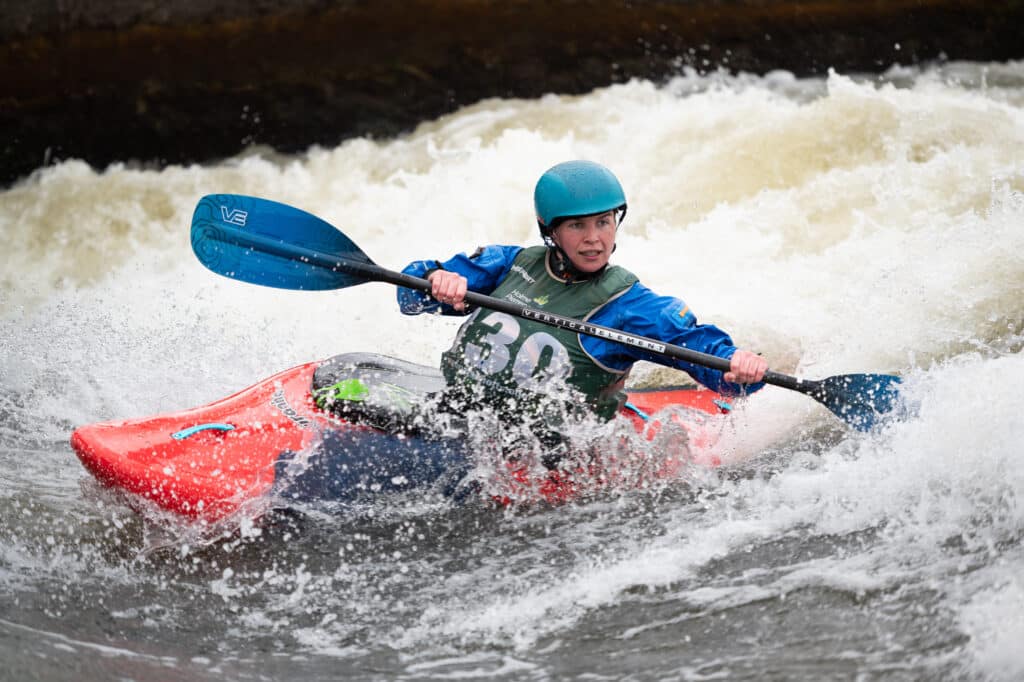
I’ve noticed it in so many other paddlers over the years. I’ve heard people down talk themselves after having a swim or a bad run down a rapid. I’ve heard people apologise for being ‘so rubbish’. I’ve seen people have full of melt downs after making a mistake. Any you know what this response leads to? Not trying things in the future.
Suddenly the fear of failure is so great that it stops the person from even trying in the first place. The thought process that you are inherently ‘bad’ at kayaking and therefore not even trying to get better is the ultimate roadblock of so many people who have a fixed mindset in kayaking.
But the reality is: avoiding mistakes means avoiding growth.
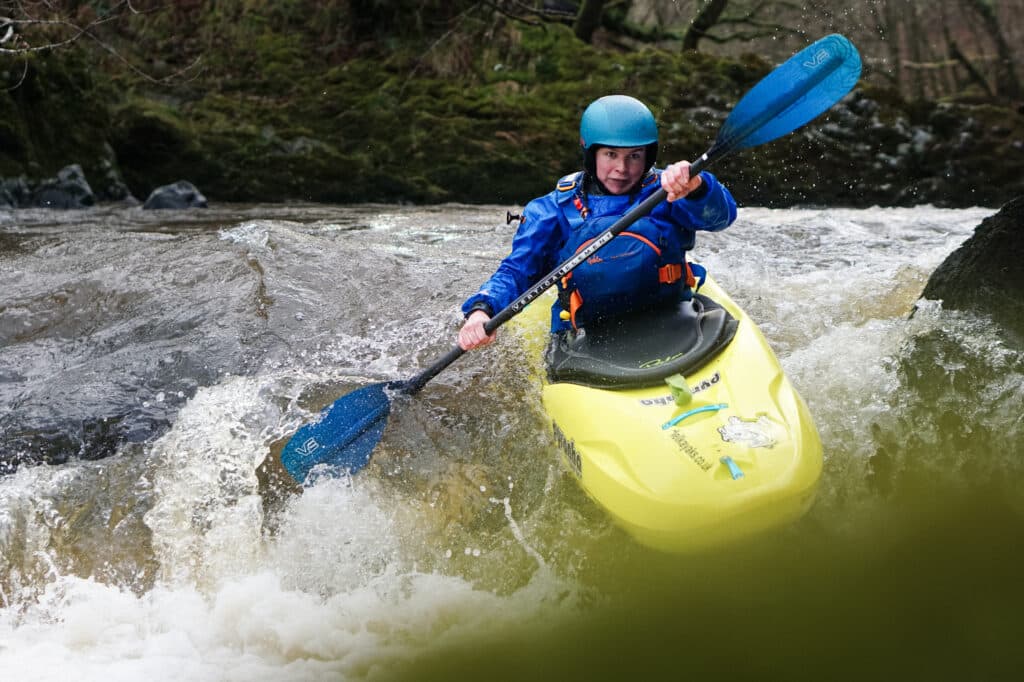
Moving from a fixed to a growth mindset
Imagine if I ended this article here? Identifying all of these problems that are relatable to so many people and yet offered no solutions? Luckily for you dear readers, I have spent years years of exploring sports psychology and mindset development. I’ve learned that a growth mindset isn’t something you’re born with, it’s something you cultivate.
It took me years before I recognised so many of my traits as being reflective of someone with a fixed mindset and someone who struggled with perfectionism and making mistakes. Luckily I do have a growth mindset about having a growth mindset! I think anyone can learn to develop their growth mindset. They just need to be willing to put the effort in and keep practising certain behaviours and thought processes until they become habits.

Recognising my own fixed mindset traits took time, but once I did, I realized that mindset, just like kayaking skills, can be trained. I still have moments of struggle, setbacks, and frustration. But I also see the progress I’ve made, not just in paddling, but in how I approach challenges in general.
In the next section I am going to share some of my top tips for improving mindset within kayaking.
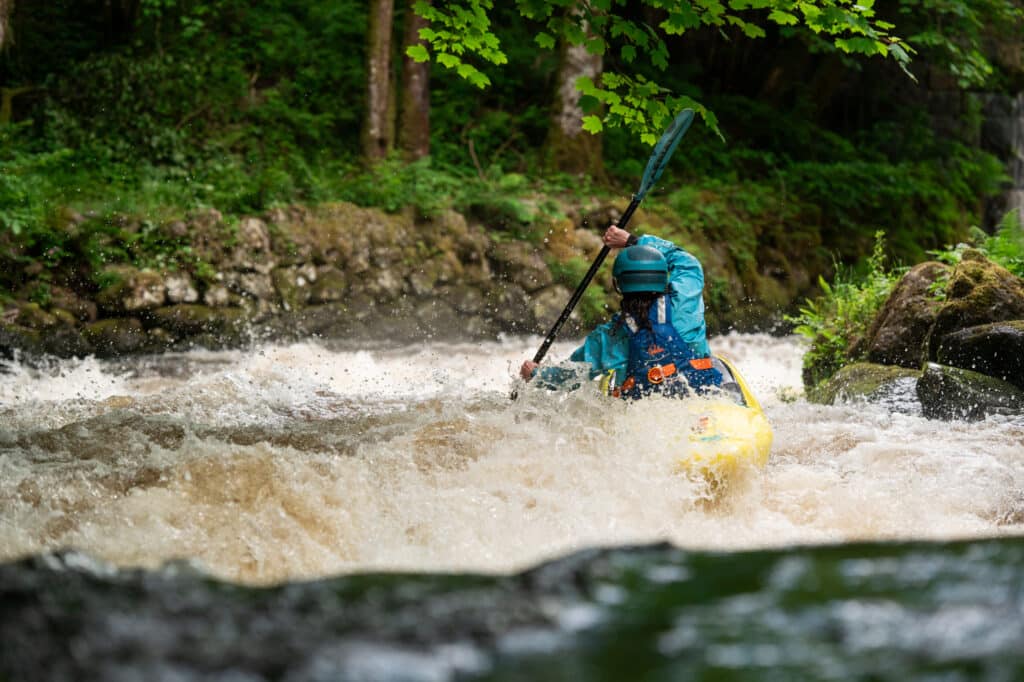
Top tips to develop a growth mindset in kayaking
1. Just do it
Overthinking leads to hesitation and hesitation leads to missed opportunities. Last year, in the days leading up to Euro Open, I was battling major head game issues in my playboat. I debated skipping the freestyle competition entirely.
Then, I had a simple thought: ‘Just get in your boat and do it.’
So I did. I swam at the end of my freestyle heat, but it didn’t matter. The act of showing up, pushing through doubt, and taking part was what counted. Dare I say – I even enjoyed it! (You can read my Euro Open blog here.) Sometimes, the best way to break through fear is to act before self doubt takes over.
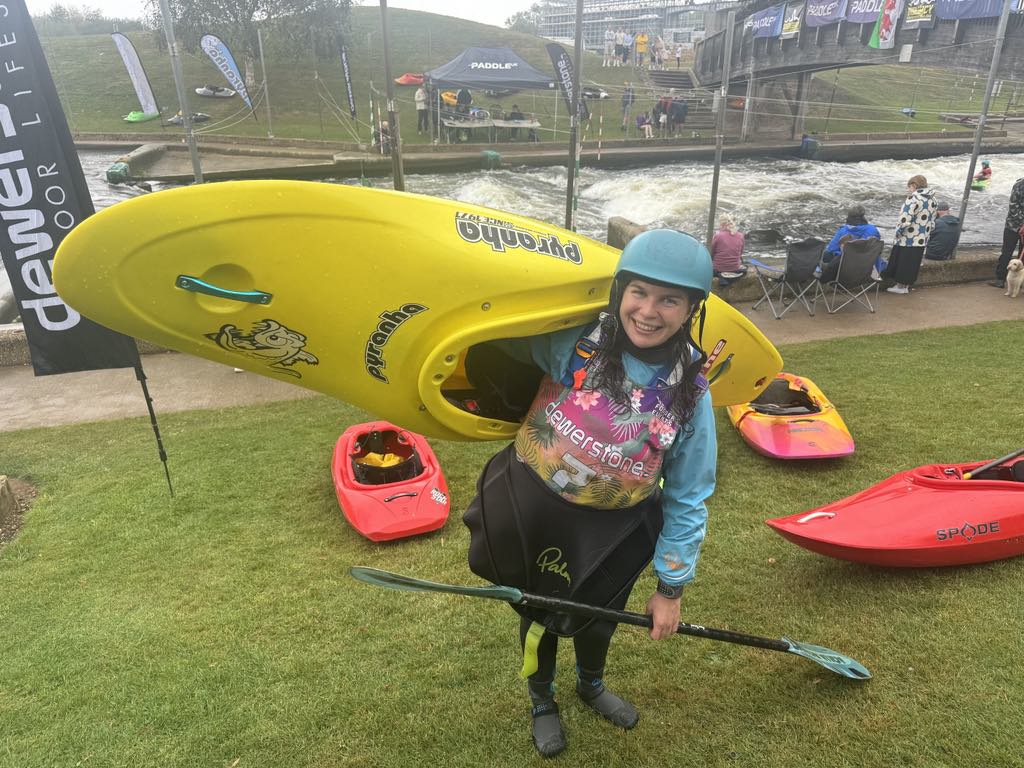
2. See failure as an opportunity to learn
Failure isn’t proof you’re bad at something, it is proof that you are learning! The key is shifting from self criticism to constructive reflection.
Instead of dwelling on mistakes, ask yourself:
- What led to that mistake?
- What could I do differently next time?
- What have I learned from this experience?
Removing judgment from failure allows you to grow rather than get stuck. Seeking feedback from others can also help. Sometimes, an outside perspective offers clarity on what you might not see yourself.
Both allow you to hopefully apply that learning at the next opportunity!
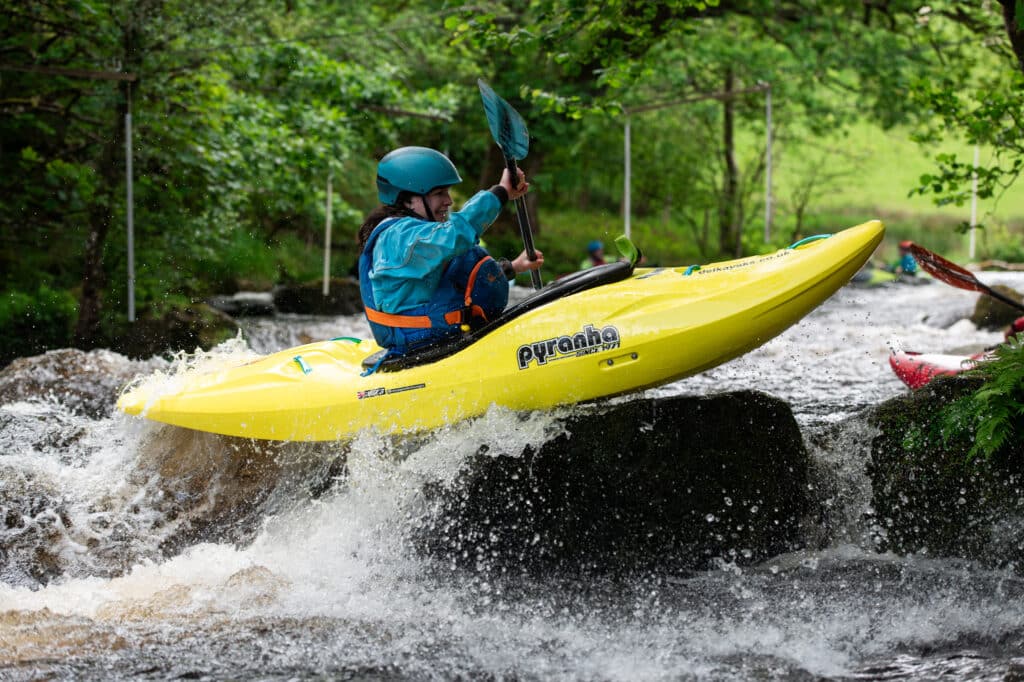
3. Recognise progress + successes
For years, I struggled with dismissing positive feedback. Compliments from friends? I assumed they were ‘just being nice.’ But one piece of criticism? I believed it completely. I would also struggle to recognise any of my successes myself.
It’s okay to tell yourself you’ve done a good job! Being kind to yourself is so important in developing a growth mindset. Letting go of perfectionism behaviours has led to an overall better view of myself. When you no longer care about being perfect – it allows you to celebrate the good that is already there.
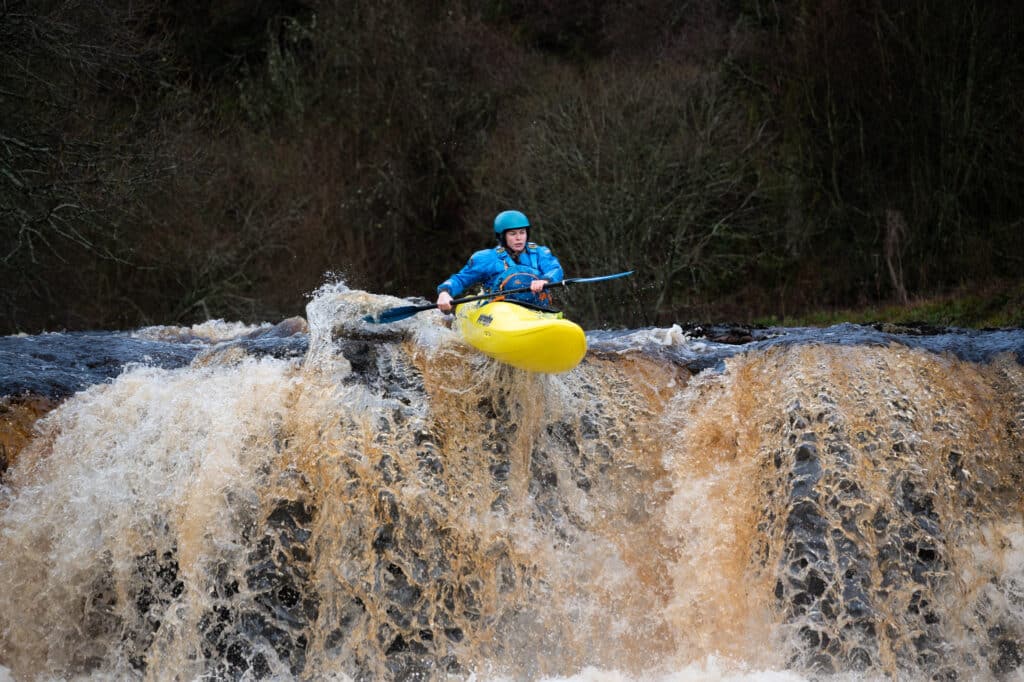
I now try to really recognise good things I have done whilst paddling and celebrate them. This positive self talk has massively improved my self image. This in itself has made positive changes on my behaviours which has led to move positive experiences. This cycle is a positive one and one I’m keen to keep spinning!
So go on – I challenge you: After every paddling session, list three things you did well. They don’t have to be big, maybe you committed to a line, or stayed calm after a mistake. Whatever it is, acknowledge it. The more you celebrate progress, the more confident you become.
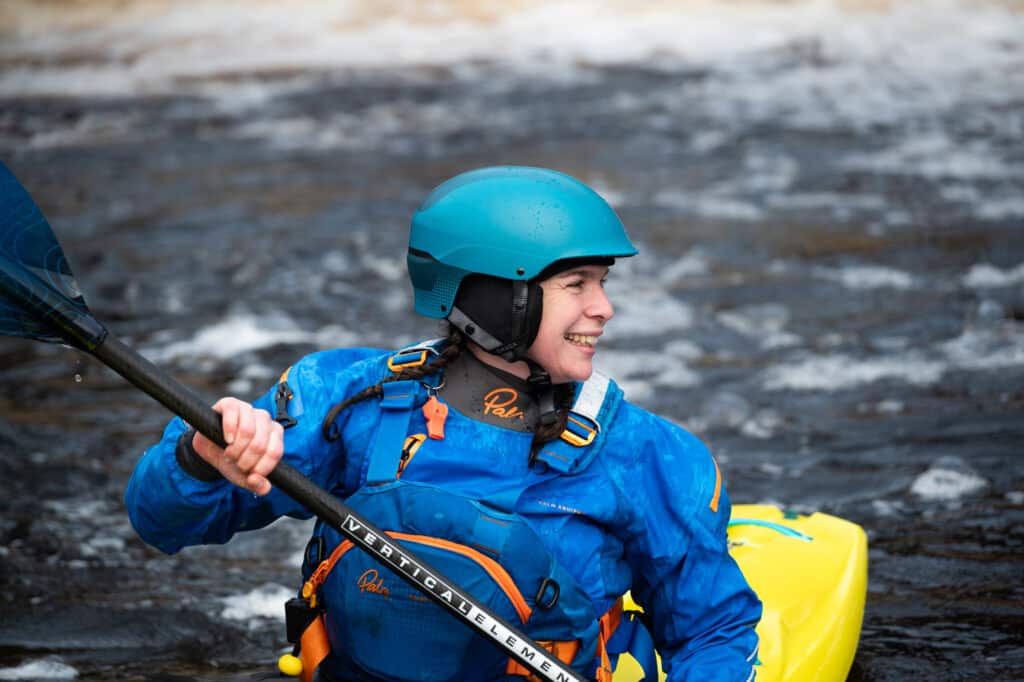
4. Keep pushing yourself
Growth happens just beyond your comfort zone but not so far beyond that it becomes overwhelming. This is the ‘learning pit’ the space where a skill is challenging but achievable.
Take surfing a hole, for example. If you’ve never done it, throwing yourself into the biggest hole on the river might be too big a leap. Instead, start small. Find a friendly hole and practice side surfing. Expect capsizes, rolls, maybe even swims. But through each attempt, you’ll improve.
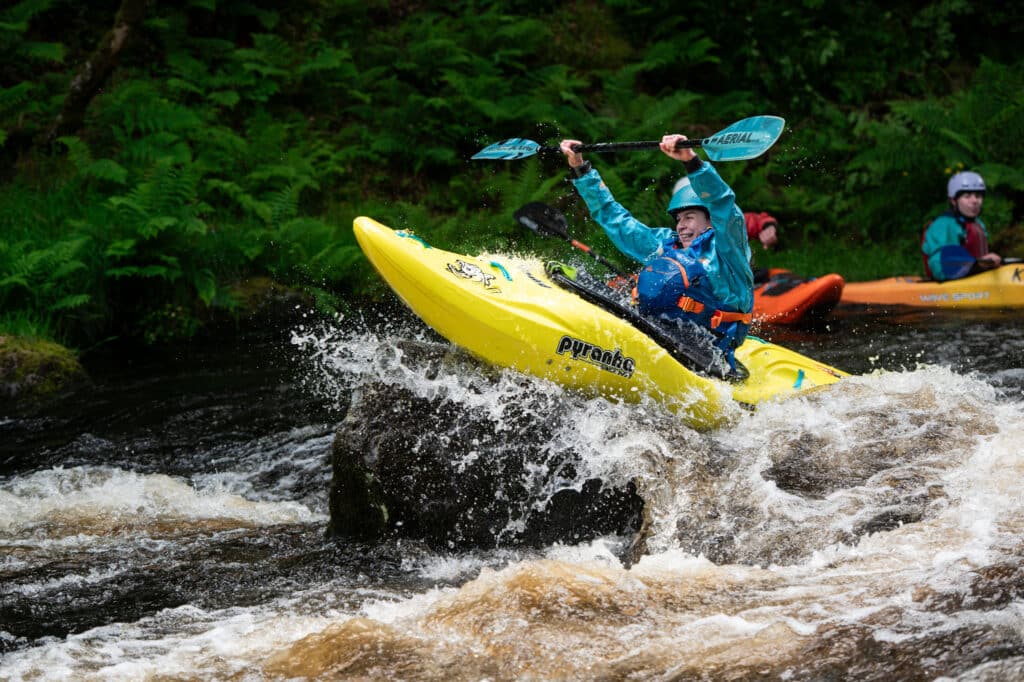
When fear of failure creeps in, ask yourself: ‘What’s the worst that could happen?’ If the answer has no lasting consequences, take the leap. The idea is to change your thinking from ‘I can’t do this’ to ‘I can’t do this yet‘.
Having good friends to share the water with who encourage you to give these a go (and support if it doesn’t go completely to plan) is the key to this one!
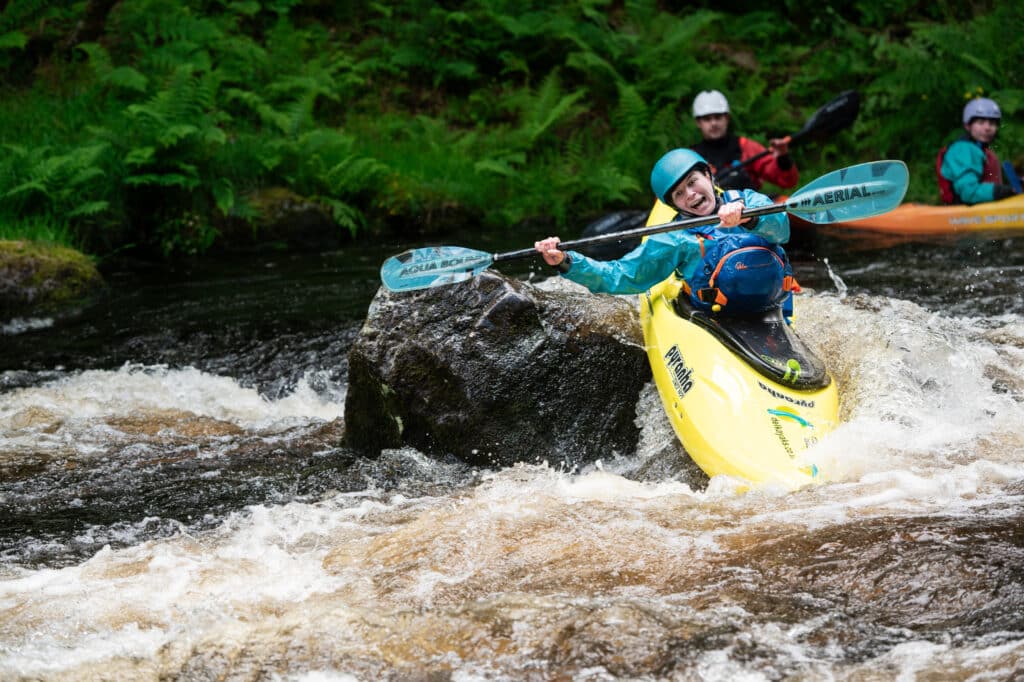
Final words
I’m still working on my growth mindset. After all it’s a journey, not a destination. Some days, I struggle. Other days, I surprise myself.
Mindset is just like any other skill in kayaking, you train it, you refine it, and over time, it strengthens. Anyone can develop a growth mindset; it just takes commitment, reflection, and the willingness to keep showing up.
Now, get out there, embrace failure, and don’t forget that old kayaking saying – if you are not swimming then you are not trying!
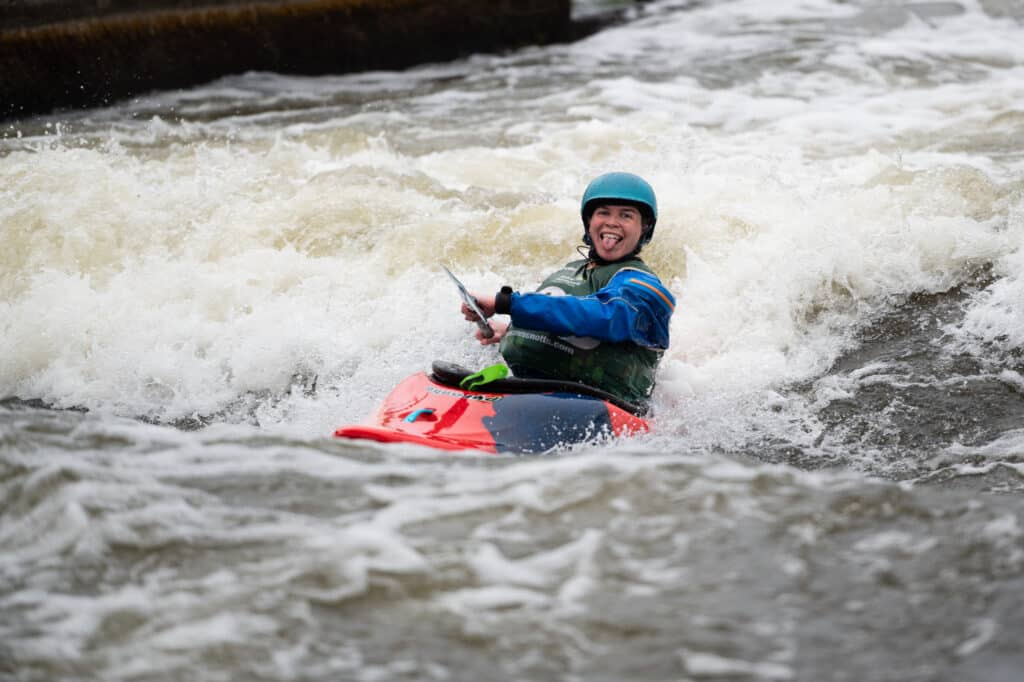
Extra Reading
I’ve linked some of my previous articles below related to this article in case of interest.
- Dealing with anxiety & kayaking
- I lost my confidence in kayaking – then I found it again
- ‘I’m sorry I’m not good enough’ – Perfectionism on the water
- Mental Health & Kayaking
- Negative thoughts and how to combat them
- I am really happy right now and loving kayaking!
- The impact of imposter syndrome as a kayaker
Happy paddling everyone!
